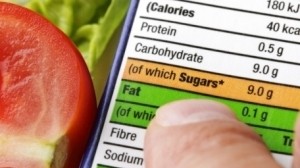New food labelling rules: what we know

The case for having common food labelling rules for all Europe is good. The old directive worked quite well, but had no teeth. The new regulation passed in 2011 and mostly coming into effect in December this year is quite complex and runs to some 47 pages. Then, there are the amendments.
So, the original intention for the “free movement of safe and wholesome food” and the “guarantee of consumers’ rights to information” is becoming rather obscure. Legislation back to 1978 is quoted. No doubt professional lawyers can understand the details, but we mere mortals are meant to know the rules too. Consumers need to know where to look on the label, where the allergen information is and of course, what the product is.
The FIC demands only two things on all food sold. They are the name of the food and what allergens are in it. If the food is pre-packed – and there is a definition of “pre-packed” – then there are another 10 things that must be shown on a label. Most of these are common sense, like the quantity, the durability date, the producer’s name and the alcohol content.
Mainly to do with safety
These are mainly to do with safety. They do not address ethical issues – despite the 400 or more amendments put forward during drafting by Members of the European Parliament, which we had to answer. Other rules do that.
Manufacturers design labels to attract buyers. This basic law, the FIC, says what must go on the label. There are other regulations which say what must not go on the label or any accompanying advertisement. So, we have the claims regulation EC 1924/2006 which prohibits any claim that suggests there is a beneficial relationship between that food and health.
The EU list shows more than 3,000 permitted claims. Claims must not be misleading or exploit fear in the consumer. Then, there are definitions of things like “low energy”, “low salt” or even “fat free”. Also, our own Food Standards Agency (FSA) has issued definitions for words like “fresh” or “natural”.
Also, there are the product or process specific regulations listed at Food Solutions' website www.foodlabelling.info. They cover things like additives, basmati rice, beef, chocolate, condensed milk, environmental issues, fat spreads, fish, GM, honey, jam and the rest of the alphabetic list. You don’t have to put a price on, but, if you do there are rules on how it must be done (98/6/EC).
Not mislead the purchaser
You must not mislead the purchaser as to the nature, properties, identity, composition, quantity, durability, origin, provenance or method of manufacture. Methods used include the shape, appearance, packaging, shelf positioning or setting as well as by the actual label or any advertising materials. It is said that there are 87 pieces of legislation that egg producers have to know about. Anyone designing a food label needs to know about many more. Labelling is more than the FIC, EU 1169/2011.
The Food Solutions' labelling information website links to the official documents – at least 200 of them. Some were difficult to find after the Department for Environment, Food and Rural Affairs took over most of the responsibility for labelling from the FSA. Some had been archived.
The Department of Health has a lot of rules about daily amounts and use by dates. But why should the Rural Payments Agency have responsibility for olive oil?
There is as yet no official EU guide to the FIC because there is not quite a unanimous interpretation of some of the provisions across all Member States in Europe. What chance do our Trading Standards Officers have to know all the details? Small food businesses have even less. That is why, having been involved in drafting the FIC, Food Solutions has produced a reference site for all the official documents, definitions, symbols and other bits.
Meanwhile, you can listen to the Food Manufacture Group’s free, one-hour webinar on the EU’s new food labelling rules here.
- Bob Salmon is a director of Food Solutions, www.food-solutions.org.
















